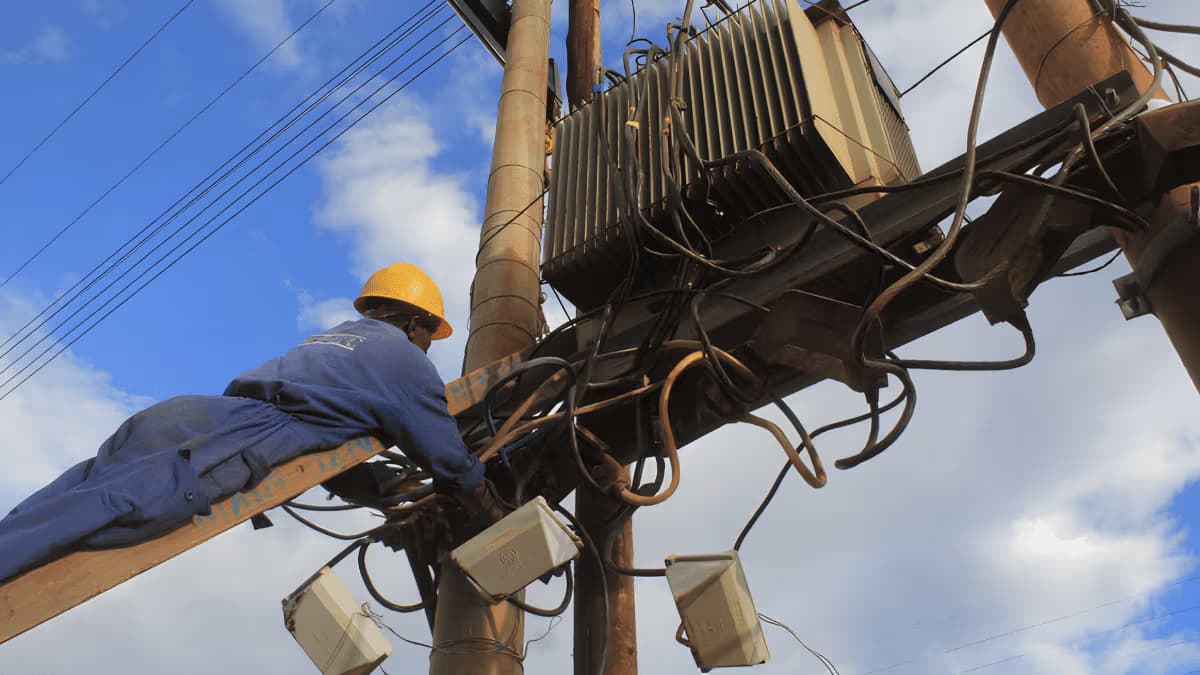Loading News Article...
We're loading the full news article for you. This includes the article content, images, author information, and related articles.
We're loading the full news article for you. This includes the article content, images, author information, and related articles.
Thousands of homes and businesses across Kenya will experience power interruptions on Tuesday, October 14, 2025, as Kenya Power undertakes scheduled maintenance, impacting daily operations and economic activities.

Kenya Power, the national electricity utility, has announced planned power outages across 14 counties on Tuesday, October 14, 2025. The interruptions, scheduled for routine maintenance and infrastructure upgrades, will affect various areas, with most outages expected to last up to eight hours, typically between 9:00 AM and 5:00 PM EAT.
Nairobi County will see disruptions in parts of Juja Road, Muratina Road, Juja A & B, Strawberry Plaza, Alamin Hospital, and Juja Corner Plaza. Other affected areas in Nairobi include Msufu Road, Sumba Road, Naimei Road, ICC Church Mombasa Road, Paa Crescent, Kifaru Crescent, Swara Crescent, Ghandi Avenue, Kisauni Road, Muthaiti Avenue, Muhoho Avenue, Nairobi West Hospital, Hotel Rio, Kodi Road, Summerdale Hotel, ABSA Bank Nairobi West, Geta Road, Nyayo Stadium Masaba Road, Ole Sankale Road, Madaraka Estate, Serene Court, Foundation Court, Ramsey Court, Siwaka Estate, Strathmore University, Langata Technical College, and Madaraka Primary School.
Residents and businesses in Kajiado County, specifically Ongata Royal Academy, Kandisi, Kandisi Catholic Church, Balozi, Metro, and Kambi Moto, will also be affected. In Machakos County, a wide range of areas including UBC, People's Park, Maruba, Legend Area, Iluvya Road, Katoloni, Kwa Mwau, Vota, Katumani, Kwa Katheke, Kimutwa, Love, Kaathi, Makaveti, Masaani, Mutuyu, Mang'auni, Kalama, Kinoi, Kamweleni, Kwa Mutisya, Mbondoni, Yaitha, Kwa Kavoo, Kyawalia, Kyamuthinza, Membani, Kitonyini, Muumandu, Lumbwa Complex, Kivandini, Ngiini, Nyayo, Malili kwa Kea, Kavyuni, Katuaa, Mutulani, Kasunguni, Liyuni, Veve, Miaani, Mbuani, Kola, and Katanga are scheduled for outages.
Other counties facing power interruptions include Uasin Gishu (Kapkawa, Simbi, Kili Farm), Nandi (Kapkawa, Simbi, Kili Farm, Serem Boys, Kapkemich, St. Makarios, Kapkures, Kabiyet, Kamoywo), Busia (Matayos, Bumala, Nambukhu, Mulwanda, Nambumboto), Kakamega (Sibembe), Bungoma, Nyeri, Tharaka Nithi, Murang'a, Kirinyaga, Kiambu, Mombasa, and Taita Taveta (Matau, Godoma, Saltlick, Maktau, KWS Maktau, Lumo Lions Bluff Conservancy, Mwashoti, Kwa Mnegwa, Sarova Saltlick Hotel & Lodges).
Frequent power outages pose a significant challenge to Kenya's economy. The manufacturing sector alone can incur losses of approximately KES 119.4 million per hour during nationwide blackouts, according to a December 2023 Business Daily report. Small businesses, such as salons and cyber cafes, also face substantial financial setbacks due to operational disruptions. The Kenya Association of Manufacturers (KAM) estimates daily losses of around $2 million (approximately KES 260 million) in lost productivity due to power outages.
Kenya Power has attributed many blackouts to an aging transmission network and vandalism. In the second half of 2024, Kenya's electricity reliability worsened, with system losses averaging 24.2% and power outages lasting an average of 9.15 hours per month, nearly triple the regulatory target of 3.25 hours, according to the Energy and Petroleum Regulatory Authority (EPRA). The frequency of blackouts also remained high, averaging 3.57 interruptions, more than double EPRA's target of 1.63.
In a move to address consumer concerns, the Draft Energy (Electricity Reliability, Quality of Supply and Service) Regulations, 2025, propose that Kenya Power compensate customers for extended blackouts and erratic supply. Under these proposed regulations, consumers could receive compensation equivalent to 75 percent of their average daily consumption for prolonged outages, capped at KES 550,559.85 for large consumers. Compensation for delays in restoring power after scheduled maintenance would be 1.5 times the average daily consumption, capped at KES 734,079.80. However, compensation will not be provided for outages caused by force majeure, third-party interference, vandalism, or faults on the consumer's side.
Kenya Power has invested approximately KES 29 billion to strengthen its network, including clearing trees along power lines, repairing distribution lines, and replacing insulators and transformers. The utility also launched a Live Line Maintenance Programme in 2019, funded in part by the World Bank, to reduce planned shutdowns and improve supply stability. This program has reportedly reduced planned shutdowns by about 40 percent.
The utility firm serves over 9.6 million customers nationwide and continues to prioritize maintenance activities to enhance service delivery. The Ministry of Energy's 2024-43 Least Cost Power Development Plan projects electricity demand to grow by an average of 6 percent annually, underscoring the need for continued investment in generation capacity and infrastructure.
Counties Affected: 14 (Nairobi, Kajiado, Machakos, Uasin Gishu, Nandi, Busia, Kakamega, Bungoma, Nyeri, Tharaka Nithi, Murang'a, Kirinyaga, Kiambu, Mombasa, Taita Taveta).
Outage Duration: Generally 8 hours (9:00 AM to 5:00 PM EAT).
Purpose: Routine maintenance, infrastructure upgrades, new customer connections.
Economic Impact: Manufacturing sector can lose approximately KES 119.4 million per hour during nationwide blackouts (Business Daily, December 13, 2023).
Average Monthly Outage Duration (H2 2024): 9.15 hours, nearly triple the regulatory target of 3.25 hours (EPRA, March 2025).
Average Monthly Outage Frequency (H2 2024): 3.57 interruptions, more than double the regulatory target of 1.63 interruptions (EPRA, March 2025).
The implementation of the Draft Energy (Electricity Reliability, Quality of Supply and Service) Regulations, 2025, will be a key development, as it introduces a compensation framework for consumers affected by prolonged outages. This could significantly impact Kenya Power's operational costs and potentially drive improvements in service reliability. Stakeholders will be closely watching how Kenya Power balances essential maintenance with minimizing disruptions, especially as electricity demand is projected to rise significantly in the coming years.
Keep the conversation in one place—threads here stay linked to the story and in the forums.
Other hot threads
E-sports and Gaming Community in Kenya
Active 6 months ago
Popular Recreational Activities Across Counties
Active 6 months ago
The Role of Technology in Modern Agriculture (AgriTech)
Active 6 months ago
Investing in Youth Sports Development Programs
Active 6 months ago